One of the things that I don't see talked about a lot in 'classical' learning research is this idea that giving clear, unambiguous feedback is great for learning in structured environments (e.g. exams!) ... but it can actually DEGRADE your ability to learn from life.
I've only found this idea tackled in Naturalistic Decision Making (NDM) research, which is ... somewhat logical given the context. If you're training soldiers or doctors or technicians, you don't want to corrupt their ability to learn things from a changing domain.
Klein & Baxter, 2009: "providing feedback can actually get in the way of transfer of learning even though it increase the learning curve during (skill) acquisition" "Students are not compelled to develop skills for seeking their own feedback."
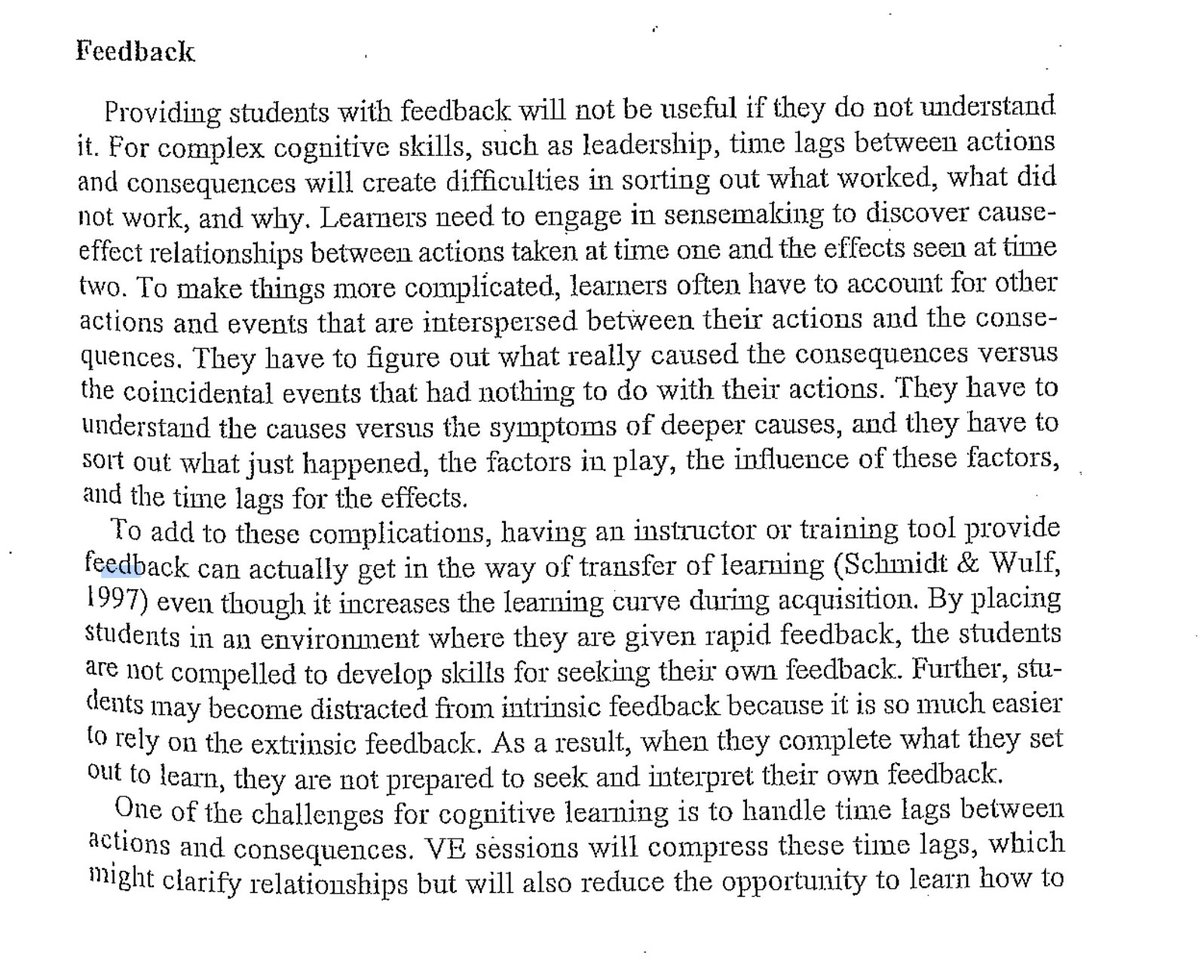
The irony is that unclear feedback can sometimes be helpful, EVEN IF it makes skill acquisition slower. Why? Because it trains the student to do something more valuable: sensemaking to figure out which bits of their experience actually matter.
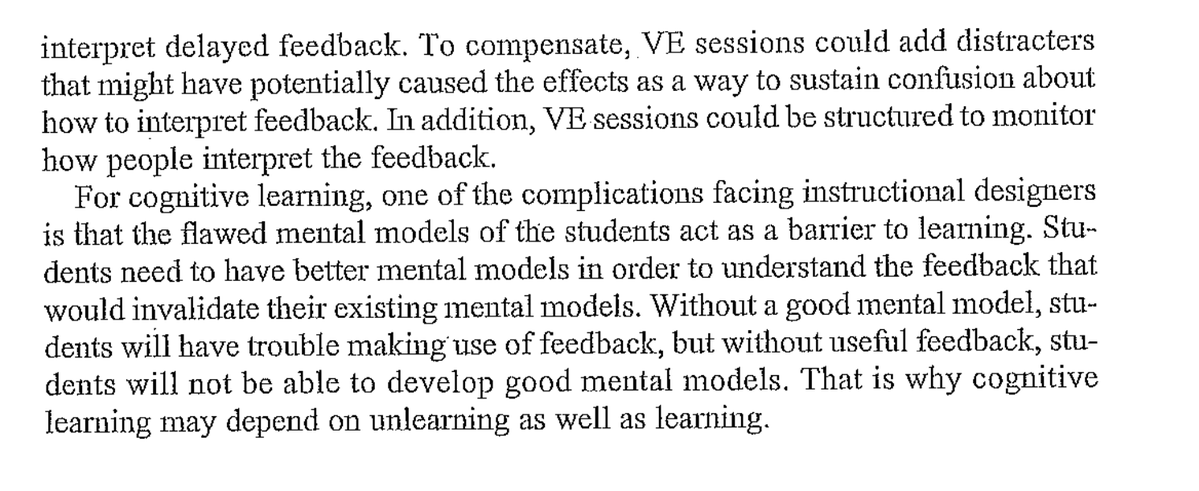
This applies to any longer-duration, 'messy feedback' skill like leadership, marriage, investing, building businesses, developing wisdom, or learning from the life experiences of others. Here's the paper, if you're interested: https://t.co/CqGKltDGwZ
So what's the solution? The researchers get at it obliquely. They point out that the classical way of training thinks of the brain as a 'storehouse': you stuff the brain with facts and patterns, and train folks on procedures. But this pushes you towards giving clear feedback.
Instead, if you reframe the training task as about transforming the way students SEE, then you naturally lean towards training exercises that give messy feedback, just like reality. From a lit review (https://t.co/5LgRPzPaJL)
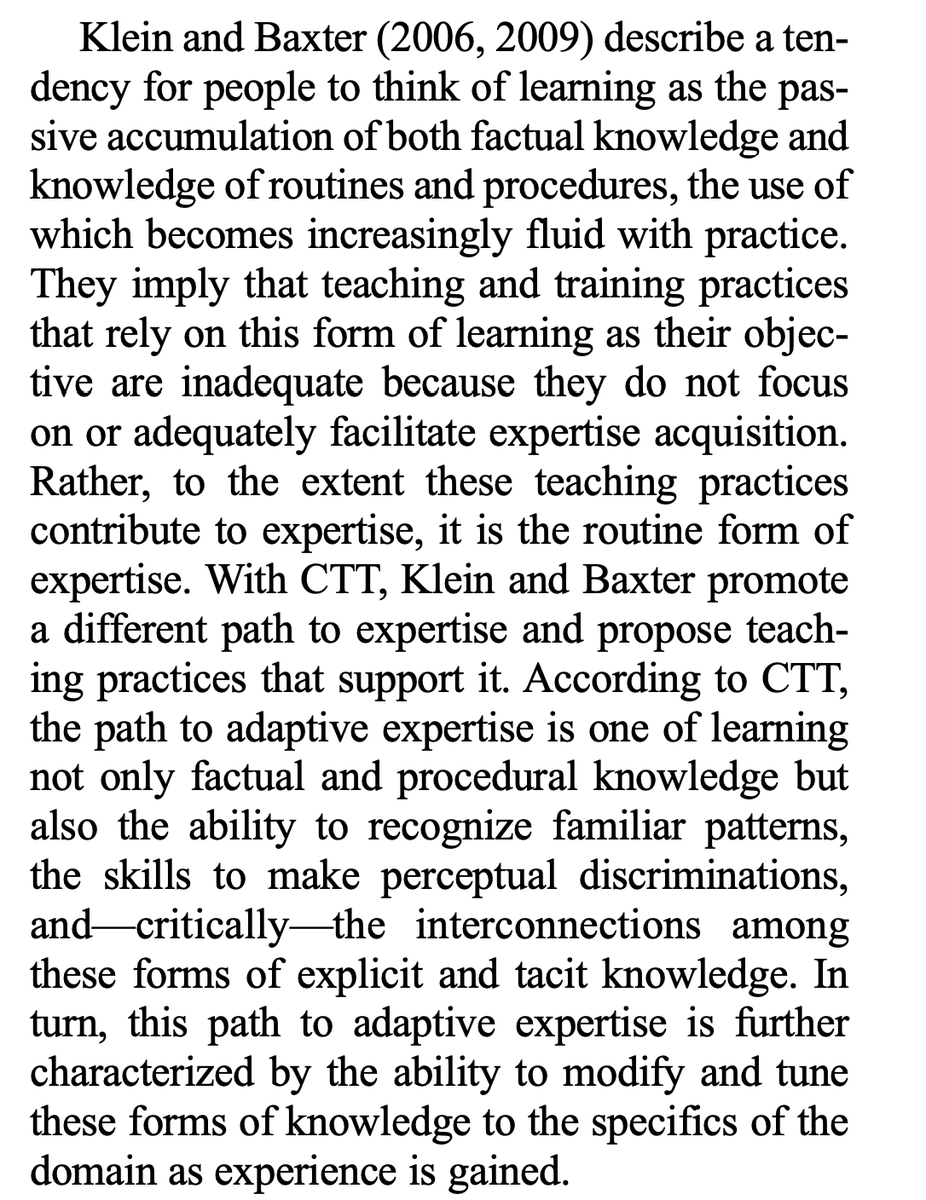
They recommend 4 teaching practices: 1. Diagnostic assessments that identify flaws in mental models 2. Design training to prioritise reflection and sensemaking 3. Exercises that prioritise ability to spot cues 4. Support that helps the student sensemake from messy feedback
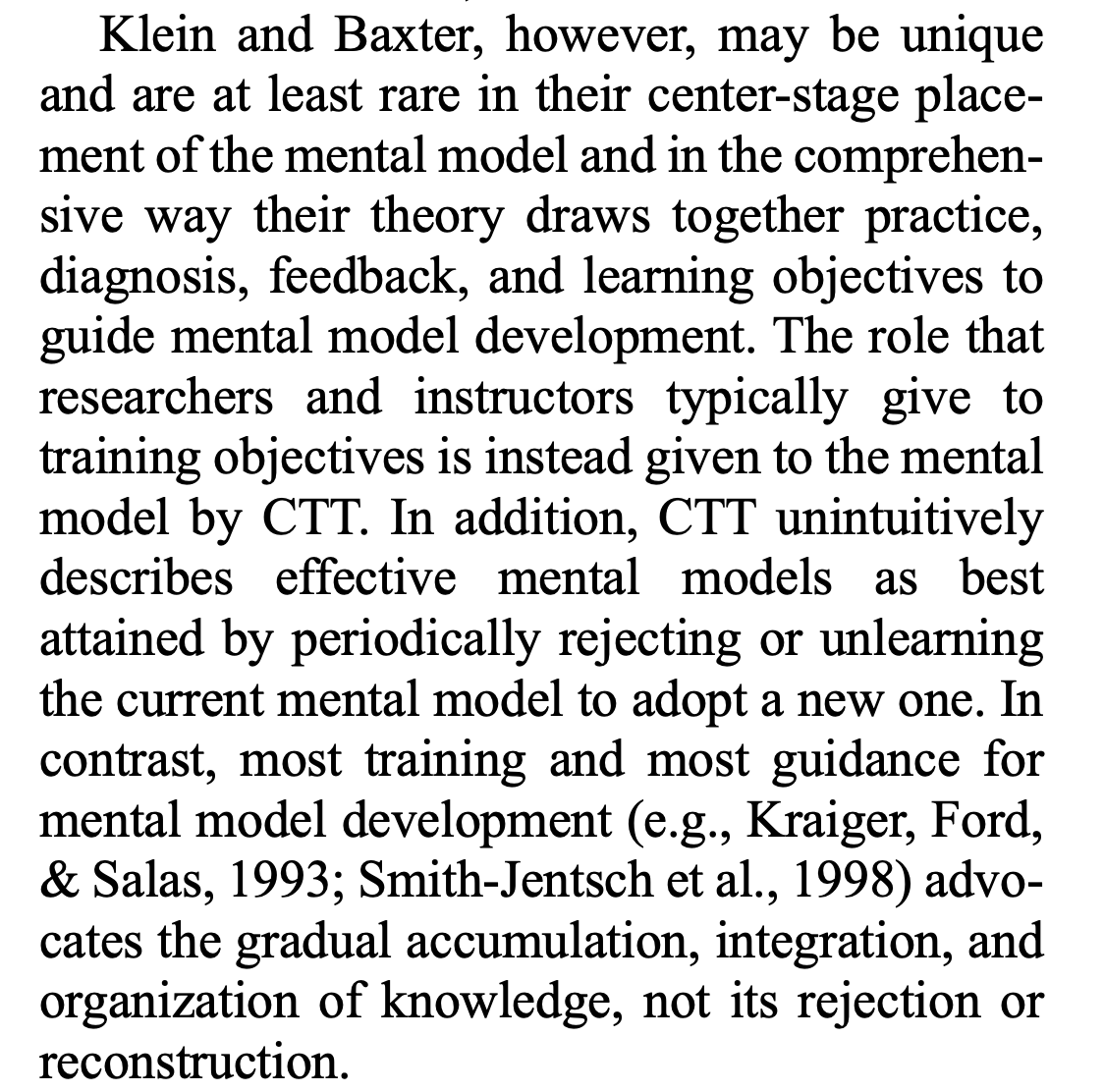
Alas, I'm not aware of any guidelines to apply these principles concretely. I know OF training methods that have implemented all 4 principles. But I don't know of any explicated how-to or guidebook by successful training designers who have used the theory.
But as-is, the theory proposed by the paper is useful: it explains something about the world that we may have noticed, but struggle to explain. You may know folks who are smart, and very good at school, who struggle in the world — in messy, unstructured, chaotic domains.
Conversely, you may have noticed folks who are perhaps less smart, that don't do well at school, but yet seem to rack up a track record of effectiveness in a broad span of 'real-world' domains. This paper gives us a mechanism for why: they simply have better sensemaking skills.
Or, to use the words of businessman and Asian tycoon Robert Kuok, they're better at "distilling wisdom from the air." Source: https://t.co/jO3tfiPHr8
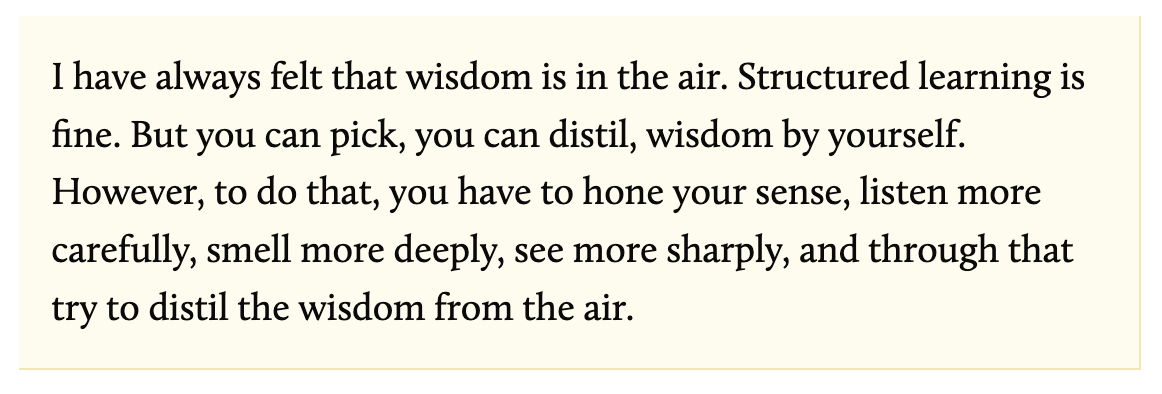
The last time Commoncog talked directly about this theory: https://t.co/n2uGzBkIBE
From LinkedIn, from someone who works directly with Gary Klein (on how they’ve applied it to their own training approach):
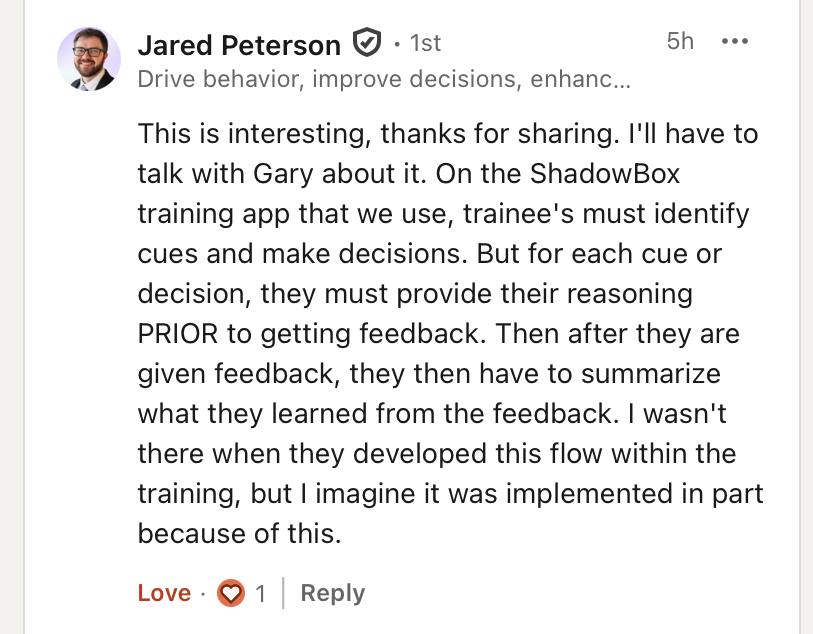
More instantiations: https://t.co/WwvPB7Wve5
Similar framing to how we approached DARPA Tutor exercises
— Eric Bailey (@01EMB) April 14, 2025
Multilayered discovery followed by After Action Review reflecting on what was noticed/key points
We'd steadily move fuzzy ideas toward clarity
Worked well
And problem solving skills transferredhttps://t.co/VinYJDHYxE pic.twitter.com/SgaJu8ePKZ
Some more material on what sensemaking IS (which is useful to know if you want to cultivate): https://t.co/oqRZKt4SEJ
Books, no.
— Brian Moon (@perigean) April 14, 2025
Articles: https://t.co/zPCgF0gIkuhttps://t.co/5IKWRzuDc5

